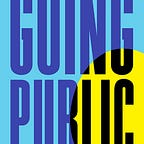Donald Trump and the Numbers Game
If I hear Donald Trump say one more time that 1 in 3 women are sexually assaulted on the journey from Honduras and Mexico to the US border, I am going to have a meltdown. And not, for once, because he’s knowingly spouting falsehoods.
Trump uses this statistic as evidence of the uniquely grave danger that these women face from the Latino men in the “caravan”, and another argument for building the wall.
What he appears to be oblivious to is that the same proportion of women living in the US and Canada will be raped or sexually assaulted in their lifetime, including women living in comfortable white middle-class suburbs of America the Beautiful. This number is confirmed in multiple studies. Women of colour, lesbian and trans women and indigenous women are at even higher risk.
It is also close to the same number widely cited in studies regarding the frequency of sexual assault in US and Canadian universities. Again the figures are even more horrifying for racialized women, lesbian and trans women, and for first-year students (see for example Carey, Durney, Shepardson & Carey “Incapacitated and Forcible Rape of College Women: Prevalence Across the First Year” Journal of Adolescent Health June 2015 (56:6)).
So why are we not talking about these numbers that show that sexual assault and rape goes on right under our noses in our so-called “civilized” communities?
The numbers
It is estimated that 460,000 sexual assaults occur each year in Canada. Of every 1,000 assaults, it is estimated that 33 are reported to police and just 3 (yes, that’s 3) will result in criminal convictions (Johnson, “Limits of a Criminal Justice Response: Trends in Police and Court Processing of Sexual Assault”). Those convictions are the result of months or even years of sustained effort and continued trauma by the victim (or more likely victims, since police are even more reluctant to charge when only one woman comes forward).
In the US, the numbers are the same. One in three women will experience contact sexual violence and one in five will be raped in their lifetime.
And these shocking numbers do not come close to the systematic sexual violence deployed against women in war zones, where rape is an established means of terrorizing and subjugating civilians, or in countries where the trafficking of girls and women for sex reaches jaw-dropping proportions (see for example the accounts by Nicholas Kristoff & Sheryl WuDunn in “Half the Sky”, and Karyn Freedman “One Hour in Paris”).
Chronic underreporting
Despite the multiple data points for the prevalence of sexual violence against women, achieving precision statistics on rape and sexual assault is complicated by a widespread reluctance to report. This means that studies probably under-estimate the frequency of sexual violence, whether in the community or on university campuses.
There are multiple barriers to reporting. These include a fear of not being believed, personal shame and embarrassment, trauma and a desire to forget, and a well-grounded apprehension that in any case, nothing will be done. An online survey circulated to students at my law school (Windsor Law) in 2014 asked students to report, anonymously, whether they had been assaulted or harassed either before, or since, coming to law school. If they answered yes, they were asked if they had reported the incident to university authorities (Donohue, Bahmanpour & Patterson, An Analysis of the Silence Surrounding Sexual Assault in Ontario Law Schools (April 2014)).
2/3 reported experiencing sexual harassment or assault before entering law school, 1/3 while in law school. While approximately half the respondents said that they had disclosed their assault to a friend, and some had considered reporting it to authorities, none had done so. Why not? The most frequent response was that “(N)othing would be done.” And don’t forget the risks for women who report — many law students said that they didn’t want to be labelled as someone who came forward to report a sexual assault.
What is more, in some cases women who report endure public abuse and vilification, especially where the person who attacked them is “a good guy”; a favourite TV personality; a university athlete; a prospective US Supreme Court judge; or a President…
These and other disincentives to reporting continue a cycle that places the burden of recognition and redress squarely on the victims, obscuring the real extent and impact of sexual violence.
Join the dots
Trumps’ cynical exploitation of sexual attacks on women to justify his “build the wall” argument is just the latest example of how our culture seems willing to ignore the real roots of the problem of sexual violence against women.
Would we be willing to accept a similar ratio of attacks, to reports, to convictions if the crime was, say, burglary? Fraud? Or murder?
Would we tolerate this injustice if the gender roles were reversed: that is, if a significant majority of victims were men and the vast majority of perpetrators were women?
When are we going to stop treating each incident of rape and sexual assault as an isolated incident, rather than a deeply embedded cultural problem?
Rebecca Solnit describes the 87,000 annual rapes in the US as “dots so close that they’re melting into a stain, but hardly anyone connects them or names that stain.”
Let’s name that stain.
